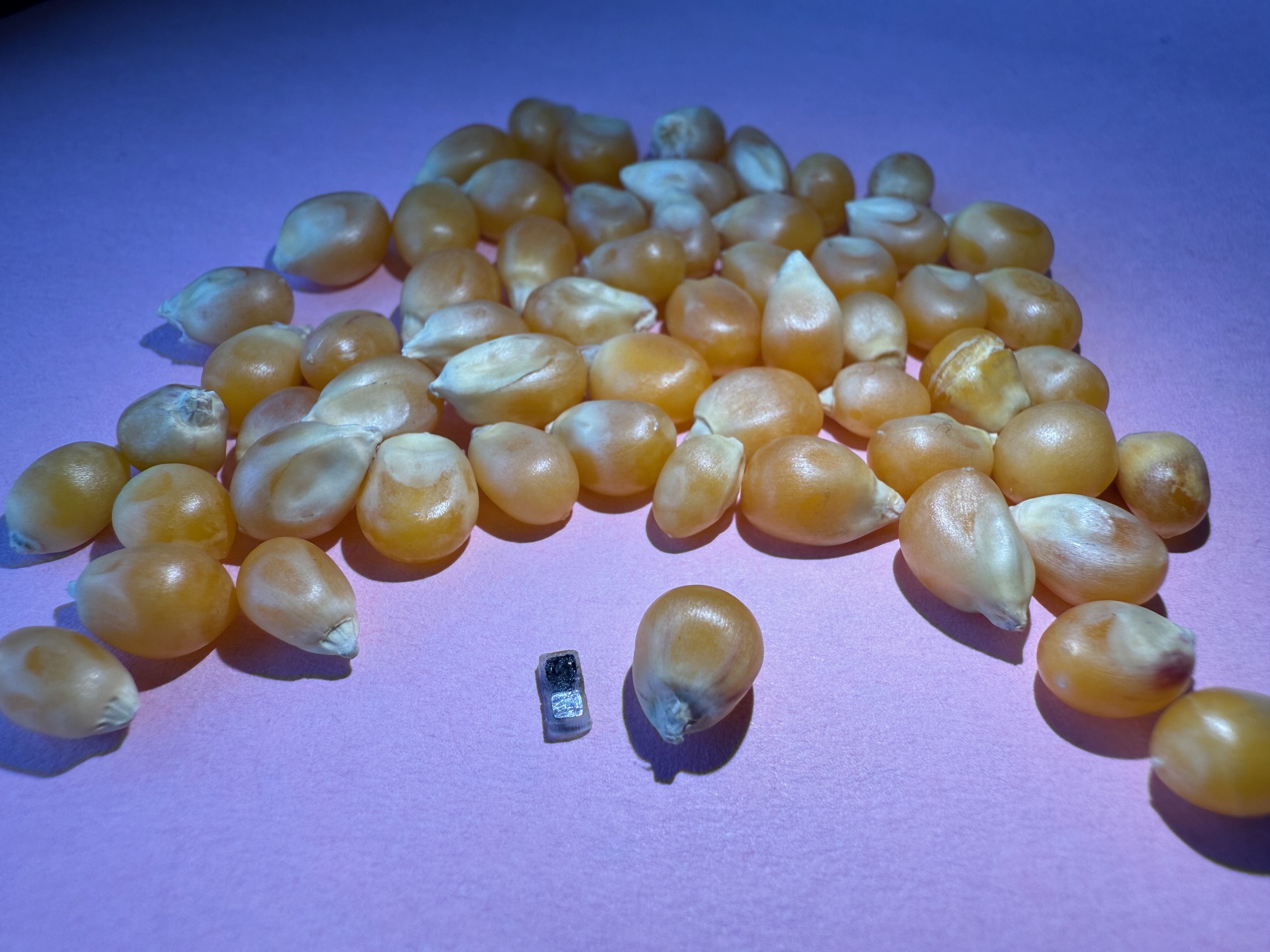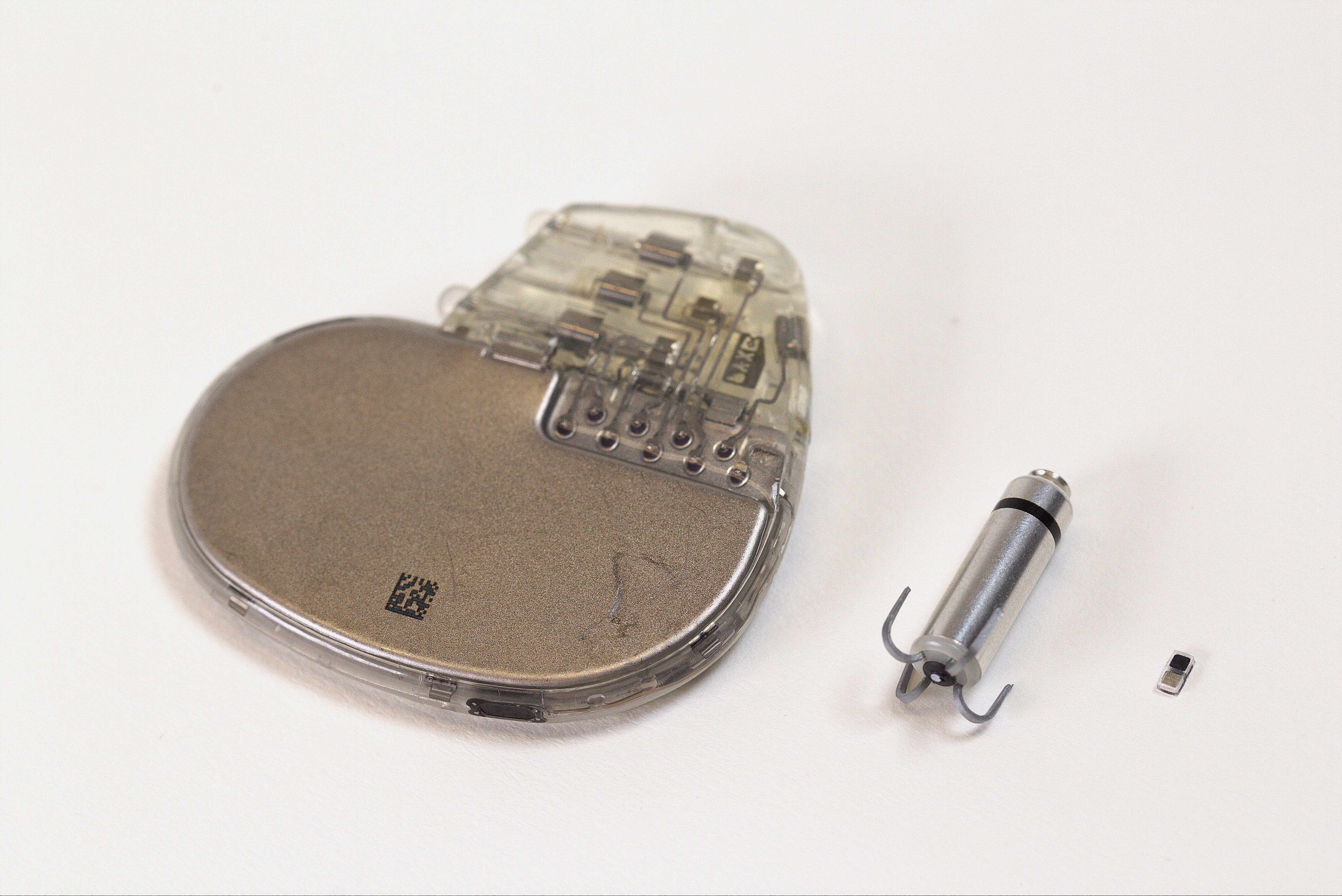See that teeny tiny rectangle next to that pencil tip up there? That’s a pacemaker – the world’s smallest in fact, which has just been revealed in a new study.
Cardiac pacemakers are up there with some of the most impressive innovations in modern medicine. After decades of refinement, today’s models are compact, capable of collecting rich data, and have years-long battery lives. For patients whose hearts beat too slowly (bradycardia) or in an irregular rhythm, a pacemaker can be life-changing.
But there are some drawbacks. For patients who only require a temporary pacemaker, having one inserted is quite an invasive procedure, bringing with it a risk of infection and damage to the heart muscle. The challenges around pacemakers are particularly apparent when it comes to children or people in smaller bodies.
Enter: a team of scientists led by Professor John A. Rogers of Northwestern University.

A corn kernel looks gigantic by comparison.
Image credit: John A. Rogers/Northwestern University
“We have developed what is, to our knowledge, the world’s smallest pacemaker,” said Rogers in a statement. “There’s a crucial need for temporary pacemakers in the context of pediatric heart surgeries, and that’s a use case where size miniaturization is incredibly important.”
Co-lead author Professor Igor Efimov explained that around 1 percent of children are born with a heart defect that requires a temporary pacemaker. Their hearts will eventually repair themselves, but for the first week of life, this medical intervention is essential.
“Those seven days are absolutely critical,” said Efimov. “Now, we can place this tiny pacemaker on a child’s heart and stimulate it with a soft, gentle, wearable device. And no additional surgery is necessary to remove it.”
The reason for that is that as well as being smaller than a grain of rice, the device is bioresorbable – when it’s no longer needed, it harmlessly breaks down inside the body.
Because the pacemaker measures only 1.8 x 3.5 x 1 millimeter, even the initial implantation doesn’t need invasive surgery. It’s powered by embedded electrodes that generate current when exposed to bodily fluids, so there are no external batteries or leads to worry about either.

From left to right: a traditional pacemaker, a leadless pacemaker, and the new tiny pacemaker.
Image credit: John A. Rogers/Northwestern University
With traditional temporary pacemakers, Efimov explained, “Wires literally protrude from the body, attached to a pacemaker outside the body. When the pacemaker is no longer needed, a physician pulls it out. The wires can become enveloped in scar tissue. So, when the wires are pulled out, that can potentially damage the heart muscle.”
“That’s actually how Neil Armstrong died. He had a temporary pacemaker after a bypass surgery. When the wires were removed, he experienced internal bleeding.”
It was these kinds of issues that inspired Efimov and Rogers to collaborate to produce the first dissolvable temporary pacemaker back in 2021. The new device, they say, is 23 times smaller than other bioresorbable models.
“Instead of using the radio frequency scheme for wireless control, we developed a light-based scheme for turning the pacemaker on and delivering stimulation pulses to the surface of the heart. This is one feature that allowed us to dramatically reduce the size,” said Rogers.
Smaller does not necessarily equal less powerful, however. “The heart requires a tiny amount of electrical stimulation,” Rogers explained. Though a fraction of the size, the new device is capable of delivering just as much stimulation as a traditional pacemaker. Indeed, the team found that their device worked as intended in mouse, rat, pig, and dog cardiac models, as well as donor human hearts.
Because they’re so tiny, there’s a possibility of using more than one of these pacemakers simultaneously. That could be useful for people with irregular heart rhythms, where specific parts of the cardiac muscle may need to be paced differently. The team is also excited about the possibility of expanding the applications beyond the heart altogether. “Because it’s so small, this pacemaker can be integrated with almost any kind of implantable device,” said Rogers.
But at its heart (no pun intended!), this study aimed to correct an unmet need for some of the littlest patients: “Our major motivation was children,” Efimov said.
The study is published in Nature.
Source Link: World's Smallest Heart Pacemaker Unveiled, And It's The Size Of An Apple Seed